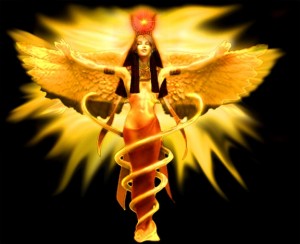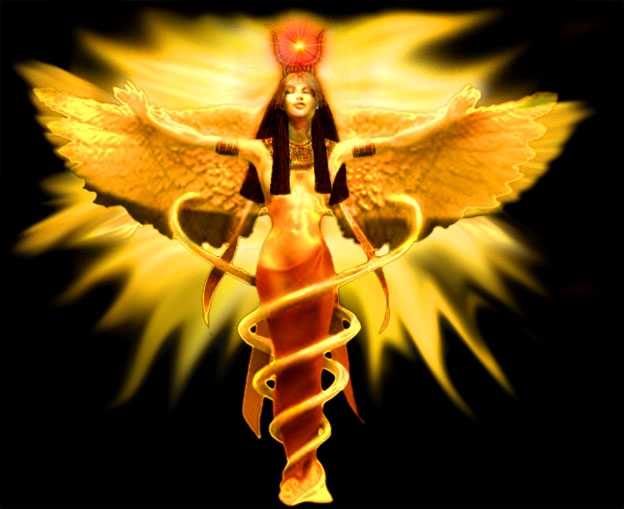
The theologians and church fathers whom laid the foundations of the orthodox stream of Christianity at the Councils of Nicaea and Chaldedon in 325 and 451ce identified the Gnostic religion as a single, heretical current that had been sparked by the magician Simon Magus in the second half of the first century ce and kept alive by a succession of teachers that included Jewish Gnostic Valentinus. Whilst it appears that these religious communities were quite variegated in nature and coexisted amicably beside other religious and philosophical ideologies of the time irrespective of cultural or geographical frontiers, the patriarchs of the Catholic Church rarely, if ever, departed from its established convention of differentiating the adherents of the Gnostic phenomenon as followers of the “Gnosis falsely so called”. In light of this it comes as an unprecedented surprise, and a pleasant one at that, to run into a third century treatise by the name of Adversus omnes haereses whose author goes as far as to identify a sect of Christian Gnostics called “Ophites”.
The first thing that stands out here is the etymology of the name in question. “Ophite” or “Ophitai” derives from the Greek “ophis” which means snake. Logically then, advocates of this particular Gnostic sect probably placed a fervent emphasis on the serpent in the Garden of Eden as the conferrer of salvific knowledge, or Gnosis. At this point it might be worth remembering some of the finer details of the occurrence in the Garden of Eden as relayed by the Gnostic mythological treatise On the Origin of the World. In a fatalistic succession of biblical events that were remoulded, reversed and transposed to a level of psychological and spiritual truth that not only included but elevated the aesthetically feminine to salvific agent of the divine, Pistis-Zoe, the Instructor of Life, entered the Garden of Eden in an attempt to foil her son’s malevolent scheme. After blowing divine soul-sparks into Eve of Zoe and extending the redemptive gesture indirectly to include Eve’s male counterpart in Adam, she infused her essence into the Tree of Gnosis. From here, she hindered her son’s relentless insurrection against the transcendental beings in the Pleroma by instructing her mortal children, also her father’s favoured creatures, to eat of the tree’s fruit, an act which laid bare the path to salvation. The serpent then, wasn’t the entity vilified for instigating the fall from paradise and humanity’s acquisition of ancestral sin. Quite the reverse in fact; she was the audacious and urgent heroine whom conspired against Yaldabaoth and his evil archons in a way that enabled Adam and Eve to outwit their much more formidable foes through mere intuition. This Gnostic reshuffling of biblical scripture gives us a taste of the narrative inversion for which the Gnostics are so renowned. In this light, Eve’s temptation of Adam wasn’t an act of damnation, but one of redemption made possible through the instruction of the divine feminine in Pistis-Zoe. Hence the “Ophites”, if they existed at all, weren’t only serpent worshippers; they were worshippers of the Divine Feminine.
The idea of a Gnostic sect whose male and female converts vociferously expressed the passions of the Great Mother Goddess whilst concurrently resisting the rapid demythologisation process instigated by the patriarchal attitudes of the Iron Age incites a quixotic notion of awe and wonder in those of us who encompass an admiration and regard for all things aesthetically feminine in life. But did such a sect ever exist? Epiphanius of Salamis (ca. 310-403ce), a bishop famed for his staunch and unwavering defence of the orthodox stream of Christianity, posited that the Ophites engaged the serpent in their celebration of the Eucharist. During the course of the ritual, the snake jettisoned its usual protective inhibitions and mingled with the Ophians in a complacent manner, slithering over loaves of bread anointed with holy water and allowing those present to manhandle and kiss it on the mouth.
This bit of detail is uncanny to say the least, for it spurs to mind the Feast of the Dormition of the Theotokos (God-bearer) in the Greek Orthodox tradition. On this particular day, the church “Our Lady of Langouvarda” on the Ionian island of Cephalonia celebrates an impressive festival marked by the appearance of cat snakes (telescopus fallax) about the church’s courtyard, walls and bell tower. The serpents, allegedly marked by a dotted imprint on their foreheads resembling a cross, emerge through crevices hewn out for the bell ropes of the tower and slither their way over people, cultic paraphernalia and a silver icon of the Virgin Mary itself. Partakers in the pastoral event claim that these snakes are timid and assiduously evasive by nature, yet during the course of the liturgy they become uncharacteristically tame and unperturbed at being handled by people. Strange to say the least. Could a natural phenomenon of this sort have inspired analogous mythological lore that was mistakenly implicated as a ritualistic aspect of the Gnostic feast of the Eucharist by the church fathers?
Another possibility that comes to the foreground is that the Ophites were from Cephalonia, though this is the inference least likely to be true. There is no proof to suggest that either Epiphanius of Salamis or any of the other Christian writers who mention the Ophites in their writings ever visited Cephalonia. Perhaps the mode of transmission was secondary. Preachers and teachers of religious philosophy were usually globe trotters, nomadic at heart, and so it would not be unreasonable to assume that one of them had heard about the divinely-inspired phenomenon from an indigenous Cephalonian. Lamentably, the absence of sufficient evidence can only ever amount to educated guesses that are tentatively speculative and two-dimensional at best. In any case, the ritualistic display that can be witnessed annually at the church “Our Lady of Langouvarda” on the 15th August or thereabouts is not in any way connected to any modern-day Hellenistic cult of the Virgin Mary. Hence, Epiphanius’s statement may be nothing more than a detailed observation of the snake’s role in Gnostic ritual, if that.
Alternatively, if there ever was a cult whose adherents called themselves “Ophites” or “Ophians” it’s a highly improbably notion that any of the church fathers would have known who they actually were. For the vast majority of its lifecycle, “Gnosticism” (and I’m still rather hesitant to use this word because it is a scholastic invention that wasn’t coined until the seventeenth century) was an esoteric and spiritual movement that was at eternal odds with the self-proclaimed orthodox sect of Christianity that was to become the Catholic Church, as well as with Judaism, a religious ideology whose patriarchal, bigoted and chauvinistic overtones was despised more than the ego-gratifying and hence degenerate paganism of Greece and Rome. From this perspective it becomes clearer why the rituals comprising the annual religious calendar of the Gnostics wouldn’t have been noted by any learned writer collating a list of pastoral events in late antiquity. The rituals themselves were conducted privately, away from the prying eyes of the uninitiated masses. Furthermore Gnostic mythological lore and ritual encompassed a strong Neopythagorean bias, an emphatic yet authentic regard for all Pythagorean teachings. Whilst of a highly mystical nature this instruction was imparted to chosen initiates under the radar of sworn secrecy. When Pythagoras settled in Crotona and established what was to become Europe’s first esoteric school, he took heed from the mysterious Egyptian and Mesopotamian cults that he himself was initiated into during his travels and imposed obligatory oaths of silence upon his own pupils. It is alleged that he is the first European man to ever do so. The Ophites or Ophians themselves would have been cut from the same fabric.
Now, an attempt to make sense out of an early Christian obsession with the ‘heresy’ of serpent worship would require a shift in intellectual gear from worm’s eye to bird’s eye consciousness. In spreading our wings and taking off into the skies we can distance ourselves from the clay or earth that cements us to minute detail and monocular vision, along with insularity that is itself an unwanted by-product of environments uniform in substance. From there we garner a greater appreciation of the earth’s sheer magnitude, as well as worldly phenomena that cannot under any circumstance be ascribed or localised to any time or place. One such phenomenon is serpent worship, and particularly the worship of the serpent as the bringer of salvific knowledge. The religious and mythological discourse of such disparately related cultural groups as the Mesopotamians, the Hindus, the Africans, the Australians, the Native Americans and the Nordics all abound in colourful narrative detail implicating the serpent as either an agent of cosmogenesis, a wise teacher or a powerful deity.
When it comes to cosmic singularities of this type, the propensity to leap to “diffusionist” theory amongst New Age thinkers is great simply because the unconscious will of the active imagination is far greater than either the will of reason or that of deductive logic. In resisting this urge greatly, it might be best to interpret the all—embracing numinosity and ubiquity of serpent symbolism and worship as proof of the uniformity of psychological archetypes and their origination in the realm of the collective unconscious across all cultures. The collective unconscious gives voice to intangible concepts through sympathetic association with something that can be grasped and comprehended by the conscious mind, something material and tangible. One of the earliest (if not the earliest) to seek expression would have been divinity, the mystical plenitude behind the shadowy play of the material universe, and courtesy of our scrupulously observant ancient ancestors the incorporeal divine found its material reflection in the snake. The latter is like the former in that it moves about in a manner that defies explanation (i.e. with no discernible limbs) and appears to remain unscathed from the ravages of natural law through the periodic renewal of its skin.
Within the confines of Greece proper, a geographical area in which the dualist stream of the redemptive Gnostic religion was immeasurably influential, serpents were sacred to Asclepius, the god of medicine and healing. The shedding of skin was considered by the pagan Greeks to be a profound gesture of perpetual rejuvenation, a phenomenon which incriminated a polar shift from a stage of corruption in death to one of fecundity in life. Death is usually preceded or induced by sickness and health is a condition indigenous to life, so the Greeks were merely ascribing homologous characteristics to the same personification of the divine, in this case Asclepius. Throughout late antiquity, the priests and priestesses of Greek temples kept serpents in their inner sanctuaries and allowed them to slither over ailing pilgrims engaged in ekoimisis, an act which involved sleeping in the temple’s inner sanctuary in hope that Asclepius would appear in one’s dreams to bequeath a cure. The most famous of these sanctuaries, or encoemeterions as they would have been called, was the Asclepieion at Epidaurus in the north-eastern Peloponnese, a site which also served as the healing god’s cult centre right up until the time that pagan practice fell into disfavour with the Christian patriarchs and was successively outlawed.
Pausanias, a Greek traveller and geographer who was alive during the great Gnostic proliferation, mentions a serpent that lived in the inner sanctuary of the temple at Olympia. He claims that the reptile was cared for by a virgin priestess who kept it gratified with dietary treats that included honeyed barley cakes. According to a well-established tradition there, the serpent was a predecessor of a mortal infant which had metamorphosised into a slithering reptile of the earth seconds before a battle between the indigenous Elians and the invading mercenaries from Arcadia was about to unravel. The divine intervention, or what could only be described as a case thereof, was so extraordinary and upsetting that the Arcadian forces dropped their weapons and fled in a frenzied state of terror. Hence the Elian city of Sosipolis was saved. Impressive and vibrant as it may be, an anecdote of this type can never be taken at face value; yet, in some strange way, the outrageous element responsible for its failure to suspend narrative disbelief betrays an integral reverence and adoration that was undoubtedly the motivating force behind its early and widespread association with all things divine.
That said it is unlikely that the Greeks inculcated the above mentioned particulars of serpent worship in adherents of Gnostic sects like the “Ophites” or “Ophians”, who, like the Jews, would have been unconsciously conditioned to Iron Age premises that defined the predominant divine element in the cosmos and its material equivalent as male, as well as a supposition that the female was subordinate to the male in all respects. Moreover modern research has never hypothesised let alone substantiated a theory that identified Greece as a breeding ground for the Gnostic religion or its various sects. The main branch of the Gnostic movement, the pantheistic stream that was heavily focused upon the hypothesis of emanations, was the result of the intellectual contemplation of an Egyptian Christian called Basilides from Alexandria in Egypt. It would be foolhardy to assume that the philosophical deductions of Basilides that led to its formation weren’t in some way influenced by the metaphysical concerns of the autochthonous peoples, the Egyptians; in their primordial culture the divine feminine had been assuming the form of a serpent and playing a pivotal role in the transmission of divine knowledge for millennia on end.
Indeed, the Egyptian mythological and eschatological sources are rife with matriarchal sentiment. In the Egyptian pantheon, the goddess Selquet was sovereign of scorpions and snakes. Wadjet, a local goddess from the city of Dep who later became the patroness of Lower Egypt, was often depicted in theriomorphic form; sometimes as a one or two snake-headed woman, at other times as a serpent with a woman’s head, and at other times still in the guise of one of Africa’s most venomous snakes, the Egyptian cobra. The motif’s numinosity extends even to the Egyptian creation myth, to the cosmogony of Hermopolis Magna, where the female counterparts of the divine male-female Ogdoad rising from the primordial first matter are snake or serpent-headed. In the sphere of apotropaic magic, the goddesses Isis and Nepthys stand at the helm of the sun god Re’s solar barge and facilitate his nocturnal journey through the Egyptian Netherworld in the form of asps.
Isis in particular was inexplicably connected to magic, or heka as the Egyptians themselves would have called it. The goddess was often styled “Great of Magic” or simply “Great Magician”, a title which bore witness to her ingenuity in discovering the sun god’s closely guarded secret. Engaging a form of magical evocation that strongly recalls the black art, Isis conjures a serpent demon using the god’s own spittle mixed with some earth and directs it towards him with a vengeance. In turn the serpent intercepts the unsuspecting god on his pilgrimage across the sky and proceeds to deliver its lethal bite. At this point the plot thickens given that the potency of venom cannot be dispelled from his dwindling body without requisite knowledge of its rudimentary ingredients. Re’s only hope of self-preservation is to seek the assistance of the entity’s creator or creatrix, in this case Isis, who promises to help on the condition that he reveals his secret name to her. Salvific and divine knowledge or gnosis was called sia in Egypt, and Isis outshone all other deities when it came to this denomination because she was the only one who knew the sun god by his true name.
From the evidence just reviewed, the central question as to whether or not there every was a sect of Gnostics who identified as “Ophites” or “Ophians” must for the time being remain inconclusive, and unhappily so. What it does disclose though is that Gnostic cosmogony flirted openly with its Egyptian antecedent, and specifically with the matriarchal situation of the Great Mother Goddess in Egypt before her demythologisation at the hands of patriarchal churchmen and theologians who, having first descried an allegiance between the two streams, vehemently combatted a threating ascendant in the latter and subsequently decimated its written records.









